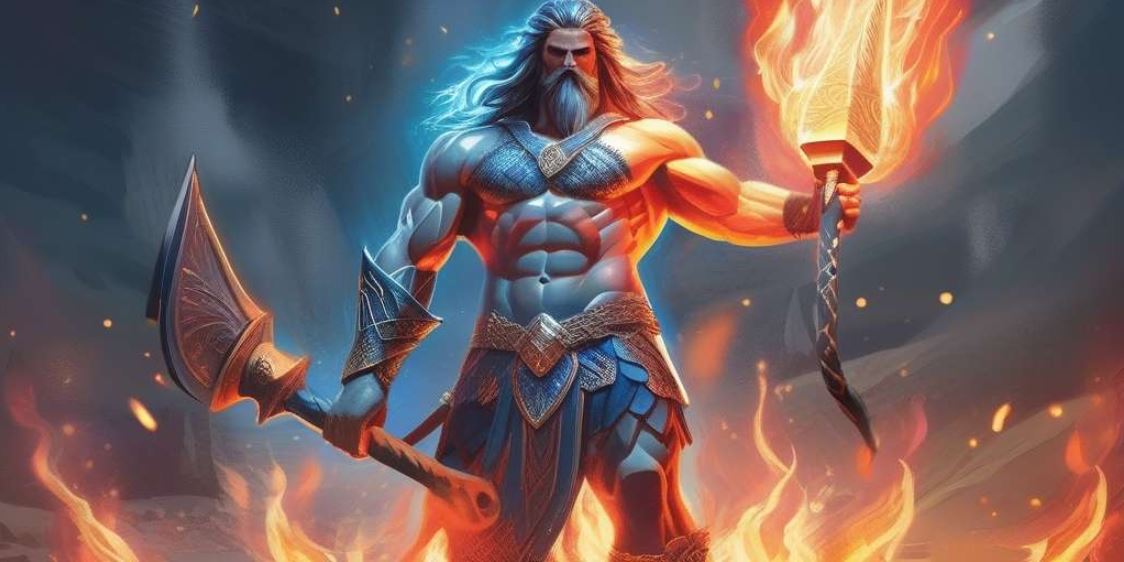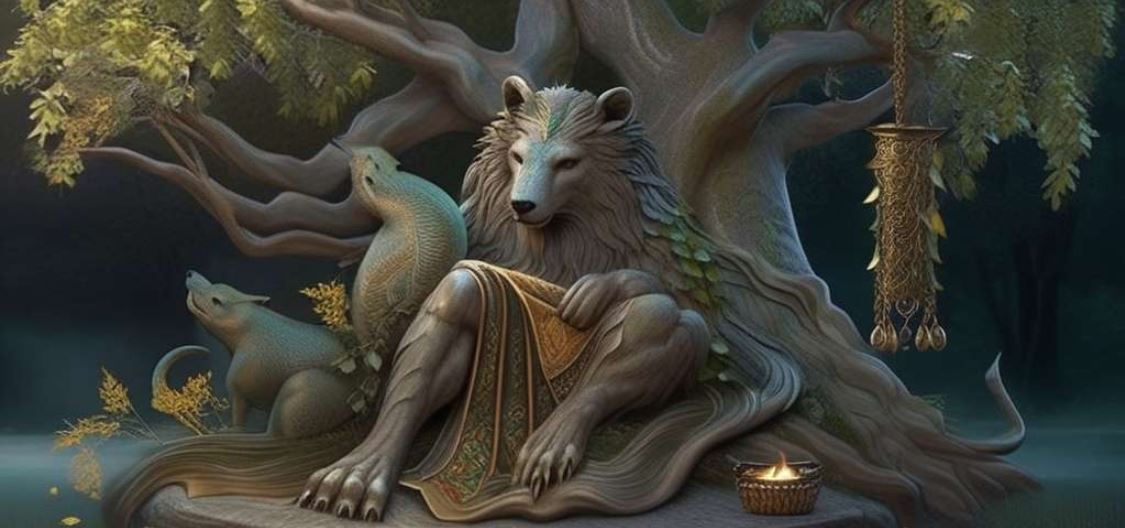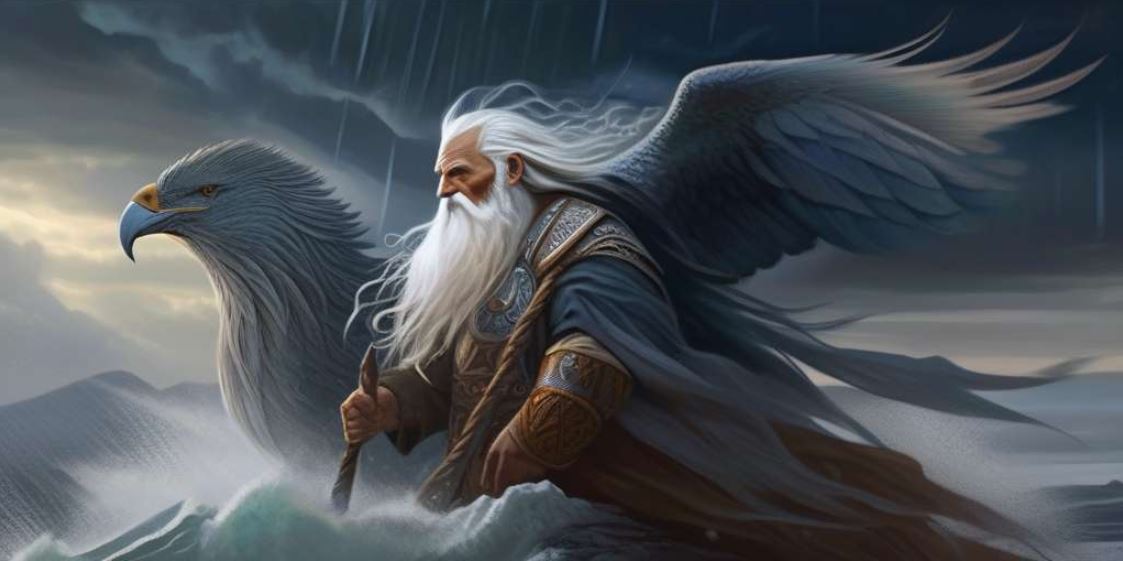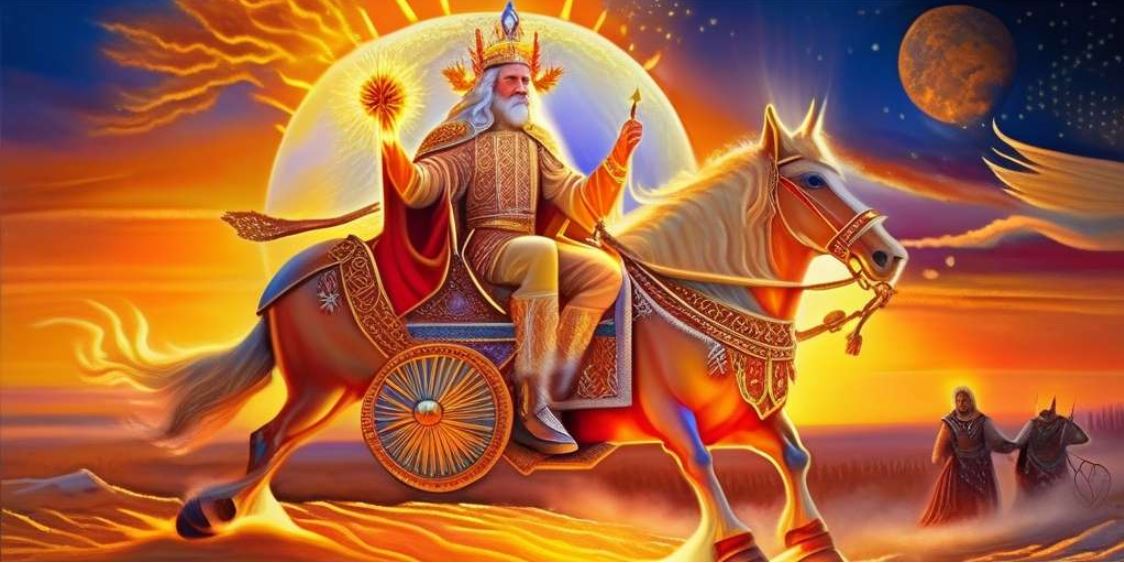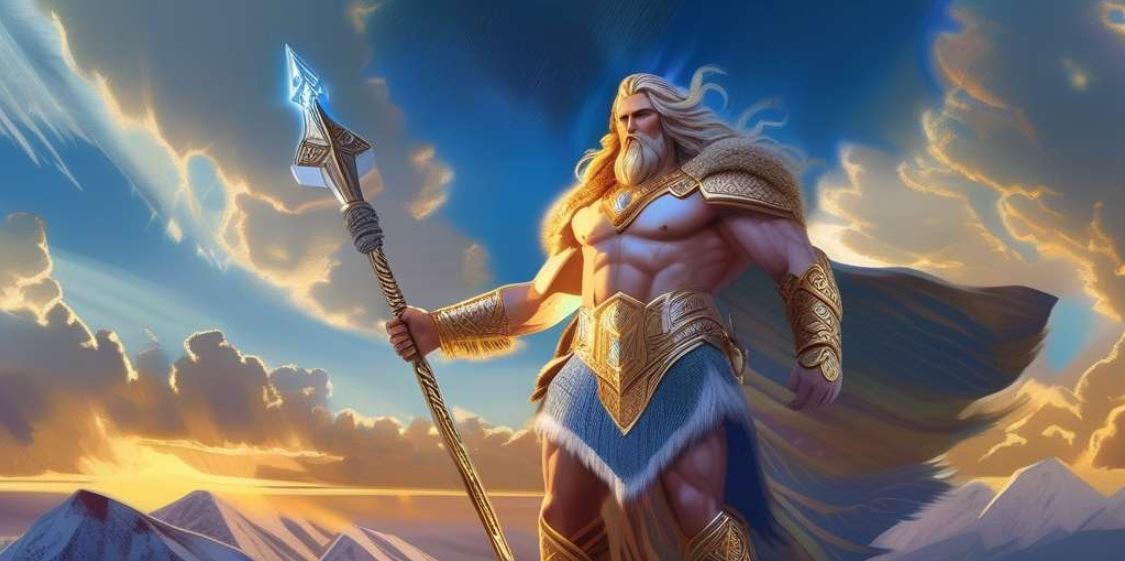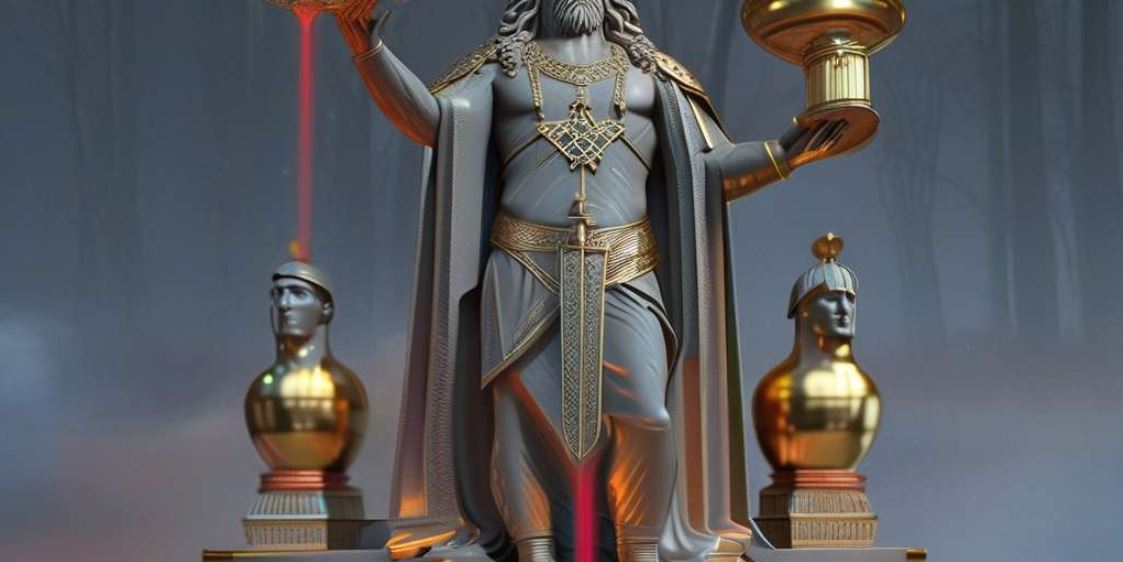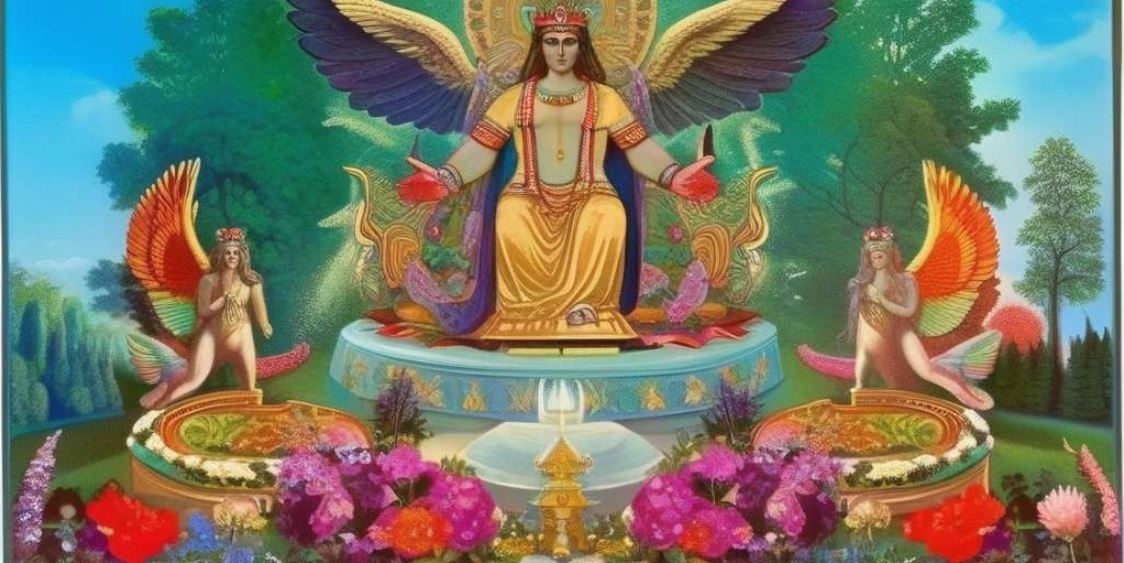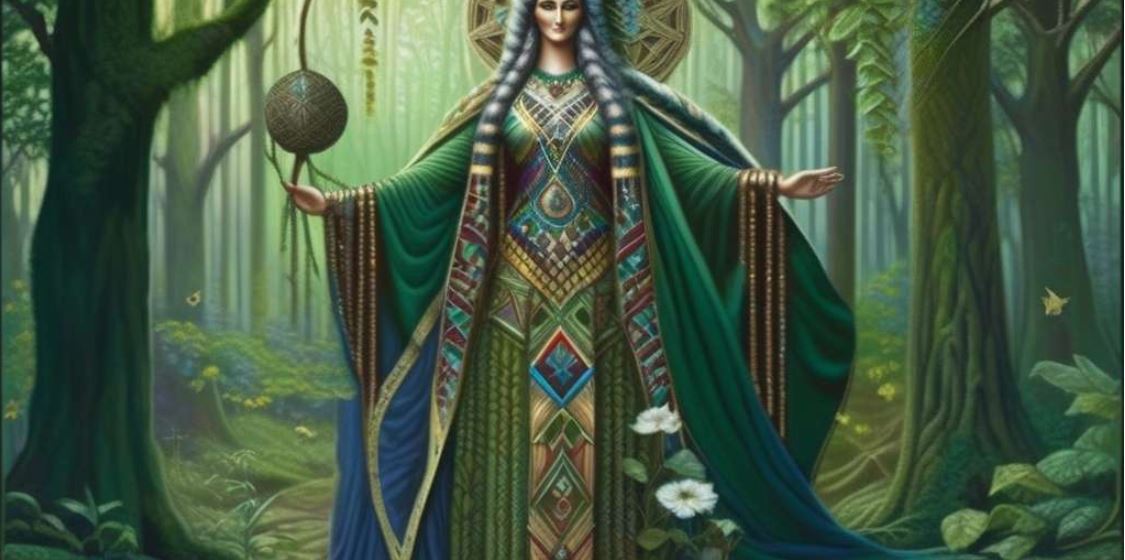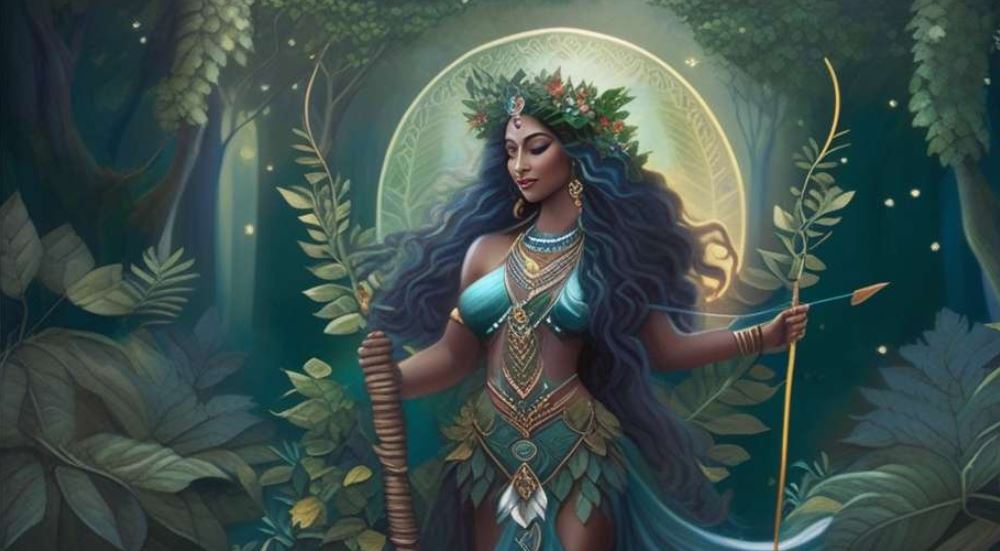Slavic God Svarozhits: Unveiling the Mysteries of this Ancient Deity
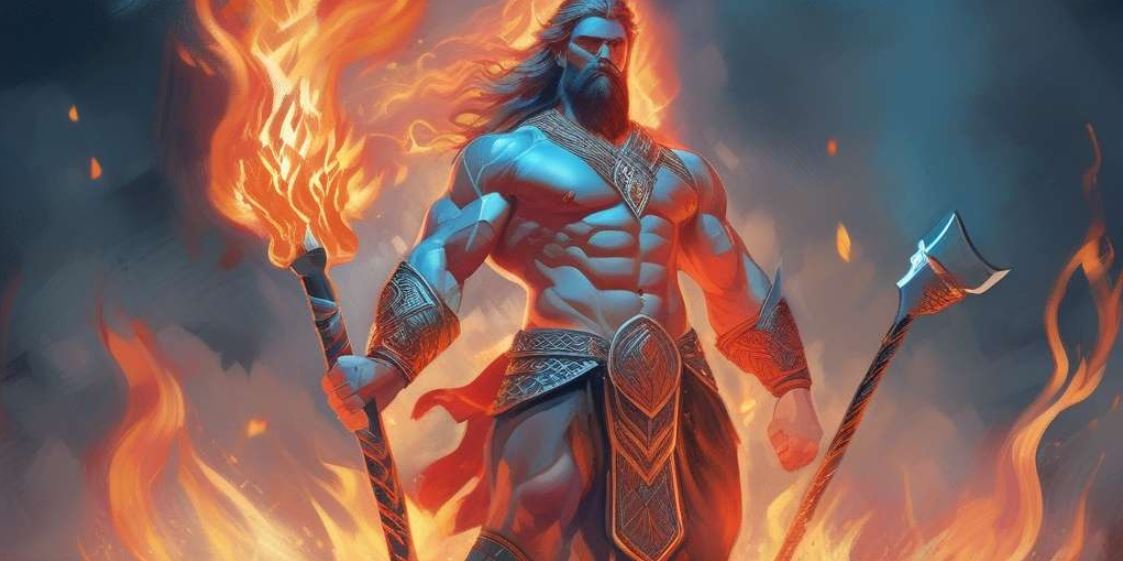
The Slavic god Svarozhits holds a significant place in ancient Slavic mythology. Associated with fire and blacksmithing, Svarozhits is believed to have a connection with the heavens as well.
Historical texts like the Primary Chronicle and the Book of Veles mention Svarozhits, shedding light on Slavic rituals and temples dedicated to this deity. Today, there is a growing movement among neo-pagan groups in Russia and other regions to revive the worship of Svarozhits and restore ancient Slavic beliefs.
This article explores the role of Svarozhits in Slavic culture and the ongoing revitalization of these ancient beliefs.
The Slavic Mythology and its Deities
The Slavic mythology encompasses a rich tapestry of gods, goddesses, and mythical beings that played a crucial role in the ancient Slavic culture. Understanding this mythology provides a glimpse into the beliefs and values that shaped the lives of the Slavic people.
Overview of Slavic Mythology
Slavic mythology is characterized by a diverse pantheon of deities, each associated with various aspects of nature, human life, and societal values. These gods and goddesses personified forces such as fertility, warfare, love, and wisdom, representing different facets of the natural and social world.
Myths and legends were passed down through generations, often in the form of oral traditions, and played an integral role in shaping the Slavic cultural identity. These stories served as a means of explaining the mysteries of the world and providing moral guidance.
Importance of Slavic Gods in the Culture
The Slavic gods held immense significance in the culture, influencing various aspects of everyday life, including religious ceremonies, agricultural practices, and social customs. The deities were revered as powerful beings with the ability to impact the lives of individuals and the community as a whole.
Each god had a specific domain of influence, and people sought their favor through offerings and rituals. The gods were believed to possess both benevolent and wrathful qualities, symbolizing the duality of human existence and serving as a source of inspiration, fear, and reverence.
Furthermore, the mythological stories surrounding the gods served as moral guides, teaching individuals about virtues, consequences of actions, and the importance of adherence to societal norms.
Slavic mythology shaped the cultural fabric of the Slavic people, influencing their worldview, values, and behaviors.
Understanding the deities and their significance provides valuable insights into the intricacies of the ancient Slavic culture.
Slavic God Svarozhits
His association with the heavens, although subject to scholarly discourse, adds an ethereal dimension to his dominion. The complex nature of Svarozhits is complemented by his familial ties, as he embodies the archetype of a nurturing father figure within Slavic mythology.
Beliefs and Worship of Svarozhits
The beliefs and worship practices surrounding Svarozhits in Slavic culture are deeply rooted in the significance of fire and the forge. Svarozhits is closely associated with these elements, embodying the power of creation, transformation, and purification.
Fire holds immense symbolism in the worship of Svarozhits. It represents both the physical and spiritual realms, serving as a conduit between the mortal world and the divine. The fires of the forge, in particular, symbolize craftsmanship, invention, and the transformative power of Svarozhits’ creative energy.
Fire is seen as a purifying force that cleanses the soul and provides spiritual renewal.
Temples and Rituals Dedicated to Svarozhits
Rituals performed in honor of Svarozhits often involve the use of fire and other sacred elements, such as water and earth. Followers gather in these temples during important celestial events or on specific dates significant to Svarozhits’ mythology, seeking guidance, protection, and spiritual elevation.
The temples dedicated to Svarozhits act as focal points for the community, fostering a sense of unity and connection among his followers. It is within these sacred spaces that the ancient traditions are preserved, ensuring the continued worship and veneration of Svarozhits for generations to come.
These sources shed light on the beliefs and rituals associated with Svarozhits, allowing us to glimpse into the rich cultural heritage of the Slavic people.
The Primary Chronicle and its Mention of Svarozhits
The Primary Chronicle, a significant historical text from ancient Slavic literature, offers a glimpse into the existence of Svarozhits.
This mention of Svarozhits in the Primary Chronicle reflects the cultural exchanges and influences between the ancient Slavic and Greek civilizations, further emphasizing the significance of this god within Slavic mythology.
The Book of Veles, along with various historiographical and religious texts, delve into the detailed aspects of Slavic gods and rituals, including the cults and temples dedicated to Svarozhits.
They ensure that the legacy of Svarozhits and his significance within Slavic mythology is preserved and further explored.
- The Primary Chronicle highlights Svarozhits as the Slavic equivalent of the Greek god Hephaestus.
- Other texts such as the Book of Veles provide detailed information about Svarozhits and his role in Slavic culture.
- These sources illuminate the cultural exchanges between ancient Slavic and Greek civilizations.
- They contribute to our understanding of Slavic religious practices and the worship of Svarozhits.
The historical sources on Svarozhits serve as invaluable resources for researchers, scholars, and enthusiasts interested in unraveling the mysteries and significance of this ancient Slavic god.
The ancient Slavic beliefs and the worship of Svarozhits have seen a resurgence in recent times, thanks to the efforts of various neo-pagan movements. These groups, primarily based in Russia and other regions, aim to restore and revitalize the ancient Slavic traditions, including the worship of Svarozhits as a supreme deity.
Neo-Pagan Movements and the Worship of Svarozhits
Neo-pagan movements dedicated to the revival of Slavic beliefs have gained traction, attracting individuals who long for a connection to their ancestral roots. These movements strive to reconstruct rituals, ceremonies, and practices from the ancient Slavic traditions, emphasizing the worship of Svarozhits as a vital aspect of their faith.
The followers of these neo-pagan movements seek to honor Svarozhits through various rituals and celebrations. They gather in sacred spaces, often outdoors, to offer prayers, perform sacred dances, and make offerings to invoke the blessings of Svarozhits.
These gatherings serve as a means to connect with their heritage and forge a deeper spiritual bond with the Slavic god.
Some neo-pagan groups have also established temples and shrines dedicated to Svarozhits.
These places serve as centers for worship, community gatherings, and educational activities related to Slavic mythology. The temples provide a physical space where followers can come together to pay their respects to Svarozhits and participate in ancient rituals.
Contemporary Perspectives on Svarozhits as a Supreme Deity
While Svarozhits was primarily associated with fire and blacksmithing in ancient Slavic mythology, contemporary perspectives view him as more than just a deity connected to these aspects. Many followers consider Svarozhits as the supreme god, representing the divine essence that permeates all aspects of life.
- Svarozhits is seen as a guiding force, bestowing wisdom, creativity, and inspiration upon those who seek his blessings.
- Followers believe that by worshiping Svarozhits, they can tap into his power and bring positive changes to their lives.
- Svarozhits is revered as the progenitor and protector of all living beings, symbolizing the cycle of life, death, and rebirth.
- Through his association with the heavens, Svarozhits is believed to have a connection to the celestial realm, granting insights into the mysteries of the cosmos.
Contemporary perspectives reflect a deep reverence for Svarozhits as a central figure in the revitalization of Slavic beliefs.
As more individuals embrace these ancient traditions, the worship of Svarozhits continues to thrive, providing a spiritual anchor and a sense of cultural identity in the modern world.
………..











